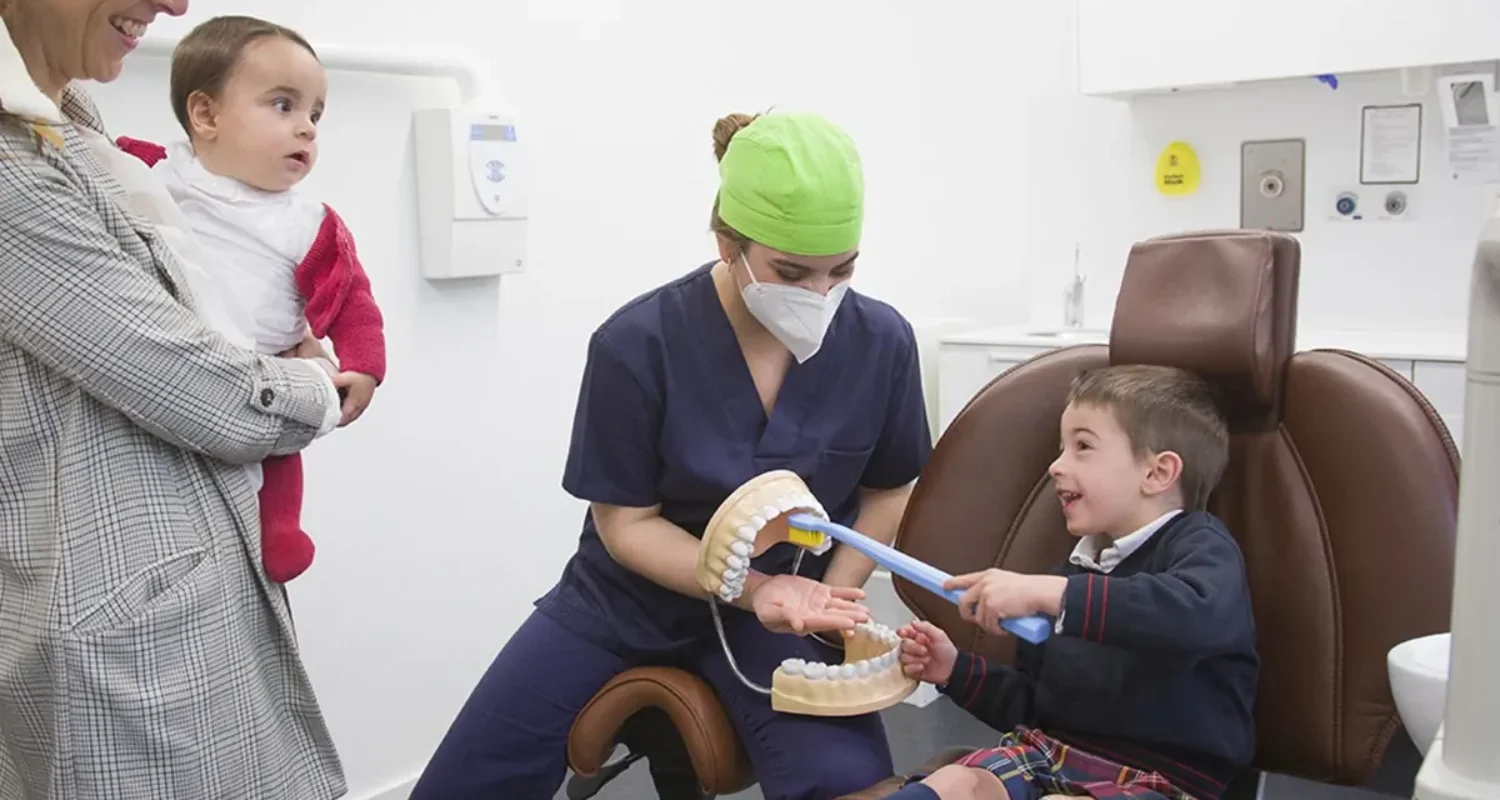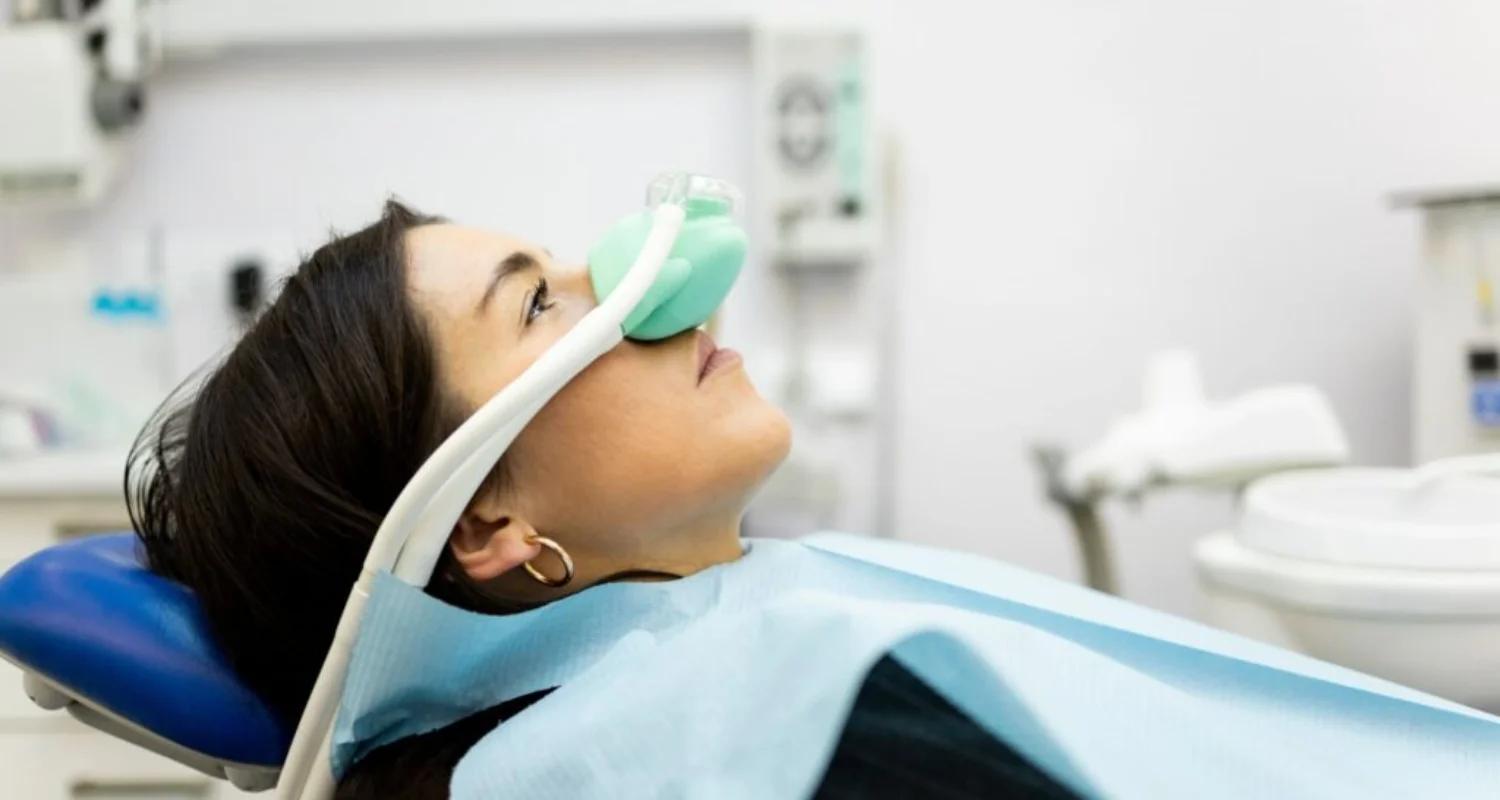Last Updated on: 13th December 2025, 07:13 am
Dental anxiety and dentophobia can have significant long-term consequences if dental check-ups are avoided. Regular dental visits are essential for preventing complications in oral health and ensuring that any dental problems are addressed early with less invasive treatments.
Many dental diseases are preventable and often linked to lifestyle habits. However, if dental anxiety leads you to avoid visiting the dentist, you’re more likely to face complicated treatments in the future and miss out on valuable advice to improve your oral care routine.
Dental anxiety manifests as fear, anxiety, or stress associated with dental environments. This anxiety can cause individuals to delay or avoid dental treatment altogether. Common triggers include needles, drills, or simply the dental setting itself. When dental anxiety becomes severe, leading to irrational fear and the avoidance of dental care, it may be classified as dentophobia.
Several mental health conditions, such as generalized anxiety disorder, PTSD, or a history of head and neck trauma, can heighten the risk of experiencing dental anxiety. Other conditions like depression, bipolar disorder, or schizophrenia also increase the likelihood of developing this anxiety.
Difference Between Dental Anxiety and Dentophobia: Understanding Dental Anxiety Treatment
There is a distinction between dental anxiety and dentophobia. In fact, each one presents in a different state:
Dental anxiety
Dental anxiety is a more common emotional state than we think; it affects many people, both children and adults, especially when the dental procedure is unknown. This type of anxiety, characterized by feelings of fear and anguish, can be expressed both physically and mentally, generating defensive responses to the idea of dental treatment.
Dental anxiety is a subjective experience that varies among the population; it may be described as a multisystemic response to a dangerous or threatening situation, which can become a significant barrier to seeking dental care, negatively affecting oral health and eventually everyday life.
Dentophobia
Dentophobia is the persistent irrational fear of the dentist. It must last for 6 months to be considered a phobia. This excessive fear of dental care can become an obstacle that prevents the patient from visiting the dentist. As a result, treatments are delayed, appointments are canceled, pain is tolerated longer than necessary, and oral health deteriorates. This problem is very common and affects both children and adults.
One way to differentiate dental anxiety from dentophobia is avoiding the dentist. When dental anxiety occurs despite the discomfort expected, you face it, while a person with dentophobia will avoid it completely.
Treatment for Dental Anxiety and Dentophobia
Dental Anxiety
Before applying any treatment to control dental anxiety, we must know the degree. We note the following degrees of anxiety:
● Mild or low: The patient remains calm in spite of his anxiety. We have a slight difficulty carrying out the initial examination, including the diagnosis and dental treatment.
● Moderate: A suspicious attitude and psychomotor agitation manifest on the part of the patient. We observe signs and symptoms of psycho-functional deterioration, which begin to hinder the diagnosis and force a change in the procedure.
● Severe or high: The patient shows intense fear and dread. The signs and symptoms prevent the realization of the examination, the diagnosis, and dental treatment, forcing the suspension of the appointment.
To address dental anxiety, we use various tactics, depending on the patient’s age:
Children:
● Time management: Allocate sufficient time for appointments to avoid rushed procedures.
● Effective communication: Clearly explain procedures using simple language to reassure the child.
● Minimize stress triggers: Apply the “four S’s” principle by reducing the visibility of needles, the sound of drills, and other stressors.
● Distraction techniques: Use music or videos to divert the child’s attention during treatment.
● Empower the child: Allow the child to signal if they experience discomfort, giving them a sense of control.
● Pain management: Ensure adequate anesthesia to reduce discomfort. Check some of the best options by clicking here!
● Therapies: Cognitive Behavioral Therapy (CBT) and relaxation techniques can be helpful, particularly for older children.
● Pharmacotherapy: For highly anxious children, sedation methods like nitrous oxide may be used.
Adults and older adults:
● Carry-over techniques: The methods used for children can be applied to adults.
● Advanced techniques: Introduce tools like Computer-Assisted Relaxation Learning (CARL) for needle-specific anxiety or use electronic dental anesthesia based on the “gate-control theory of pain.”
● Systematic desensitization: Gradually expose patients to feared stimuli to help them cope with anxiety.
● Group therapy: For severe anxiety, referral to group therapy with a psychologist or behavioral therapist may be beneficial.
These strategies allow managing dental anxiety in patients of different ages, improving their experience and oral health during dental treatment.
Dentophobia
Dentophobia, or fear of the dentist, can be effectively managed through various therapeutic strategies. Below are some of the primary methods used to address and treat this condition:
● Exposure t: Gradually introduces the patient to dental situations that provoke the phobia. Starting with non-invasive visits and slowly progressing to more involved treatments, this method helps the patient become comfortable with dental care.
● Medication: Anti-anxiety medications can be prescribed to temporarily alleviate symptoms, allowing the patient to cope better with dental procedures. These are often used in conjunction with other therapies.
● Relaxation techniques: Techniques like deep breathing and muscle relaxation are employed to reduce stress and anxiety associated with dental visits.
● Guided imagery: This method uses relaxation techniques and visualization of calming scenarios to help patients manage their fear.
● Alternative therapies: Hypnosis and acupuncture are alternative treatments that some patients find helpful in overcoming their dental fears.
● Distraction: Providing patients with music, movies, or TV shows during treatment helps divert their attention from the dental procedure.
● Sedation: For severe cases, sedation options such as nitrous oxide, oral sedatives, or intravenous sedation may be used to help the patient relax during the treatment.
Additionally, Cognitive Behavioral Therapy (CBT) is highly effective for treating dentophobia, especially in children. This therapy includes:
● Education: Teaching children and parents about dental anxiety and identifying triggers.
● Emotion discussions: Encouraging open conversations about fear and other feelings.
● Behavior management: Preparing children for what to expect at the dentist to reduce fear.
● Coping strategies: Teaching relaxation techniques and other methods to manage fear.
Each of these approaches can be combined according to the patient’s needs, always under the supervision of a mental health or dental professional. Overcoming dental anxiety and dentophobia is essential for ensuring regular dental care and maintaining good oral health. Treatments like exposure therapy, relaxation techniques, and cognitive behavioral therapy (CBT) are effective methods. For severe cases, sedation options help patients manage their fear during dental procedures. These strategies, tailored to individual needs, can significantly improve the dental experience and lead to better long-term health.
Frequently Asked Questions
How can I manage my dental anxiety during treatment?
Managing dental anxiety during treatment involves several strategies, such as practicing deep breathing, using relaxation techniques, and employing distraction methods like listening to music or watching a video. In more severe cases, sedation options such as nitrous oxide or oral sedatives can help. It’s also important to communicate your fears to your dentist, who will take steps to make the experience more comfortable for you.
How can people overcome fear of going to the dentist?
Overcoming the fear of going to the dentist, also known as dentophobia, can be achieved through exposure therapy in which patients are gradually introduced to the dental environment in a non-threatening way. Relaxation techniques, cognitive behavioral therapy (CBT), and even medication can be effective in managing this fear as well. Seeking a supportive and understanding dentist who listens to your concerns can also make a big difference.
How do you treat dental anxiety?
Dental anxiety can be treated through a combination of approaches, including relaxation techniques, CBT, and exposure therapy. Distraction methods, such as listening to music during treatment, can also help. In more severe cases, sedation options might be recommended to help patients relax during procedures. It’s crucial to tailor the approach to the individual’s level of anxiety.
How do I overcome my severe dentophobia?
For severe dentophobia, a multi-faceted approach is often necessary. This can include CBT to help reframe negative thoughts, exposure therapy to gradually reduce fear, and relaxation techniques to manage anxiety. Sedation dentistry might be an option for those who find it difficult to undergo dental procedures due to extreme fear. Consulting with a mental health professional or a dentist specializing in anxiety management can provide additional support.
I am terrified of the dentist. How can I move past this?
Moving past a deep fear of the dentist, or dentophobia, requires understanding your fear and taking small, manageable steps to address it. Techniques like exposure therapy, where you’re gradually exposed to the dental setting, and relaxation strategies can be very helpful. Sedation options during procedures and consulting with a therapist who specializes in phobias also aid in overcoming this fear. It’s important to remember that you don’t have to face it alone—seek support from professionals who will help guide you through the process.
Share
References
1. Cphd. (2021, 8 febrero). World’s Hygienist. https://colegiohigienistasmadrid.org/blog/?p=838
2. Dentophobia (Fear of Dentists). (2024, 1 mayo). Cleveland Clinic. https://my.clevelandclinic.org/health/diseases/22594-dentophobia-fear-of-dentists
3. Department of Health & Human Services. (s. f.). Dental anxiety and phobia. Better Health Channel. https://www.betterhealth.vic.gov.au/health/conditionsandtreatments/dental-anxiety-and-phobia
4. Minja, I. K., & Kahabuka, F. K. (2019). Dental Anxiety and Its Consequences to Oral Health Care Attendance and Delivery. En IntechOpen eBooks. https://doi.org/10.5772/intechopen.82175
5. Treatment for Child Dentist Phobia | Sydney Psychologists. (2024, 17 julio). MindBox Psychology. https://mindboxpsychology.com.au/dentist-phobia/
6. Deepak, V., Mahesh, K., (2014). Dental Anxiety, Fear And Phobia In Children. ResearchGate. https://www.researchgate.net/publication/273253908_DENTAL_ANXIETY_FEAR_AND_PHOBIA_IN_CHILDREN
-
Nayibe Cubillos M. [Author]
Pharmaceutical Chemestry |Pharmaceutical Process Management | Pharmaceutical Care | Pharmaceutical Services Audit | Pharmaceutical Services Process Consulting | Content Project Manager | SEO Knowledge | Content Writer | Leadership | Scrum Master
View all posts
A healthcare writer with a solid background in pharmaceutical chemistry and a thorough understanding of Colombian regulatory processes and comprehensive sector management, she has significant experience coordinating and leading multidisciplina...




















